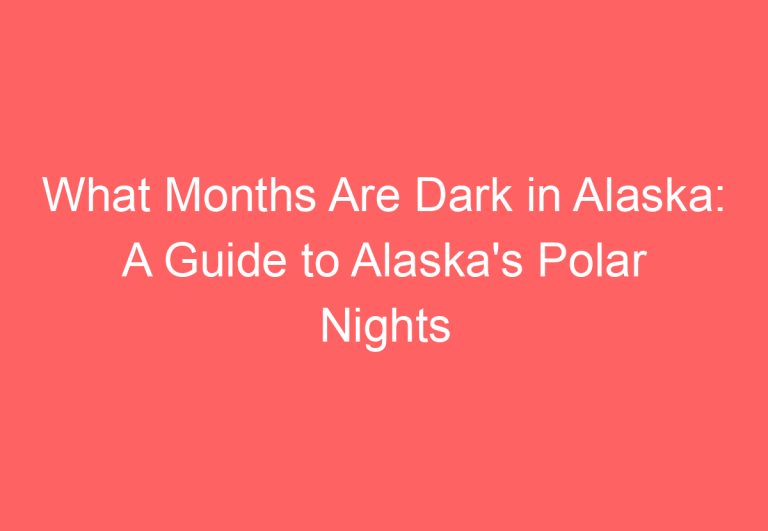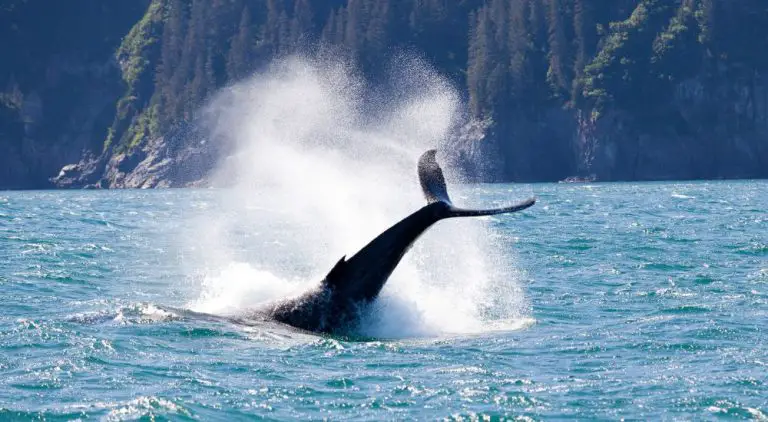How Often Does it Snow in Alaska? A Comprehensive Guide to Alaska’s Snowfall Patterns
Alaska is known for its snowy landscapes and wintry weather conditions. However, many people wonder just how often it snows in Alaska. The answer to this question can vary depending on the location and time of year, but overall, Alaska experiences a significant amount of snowfall each year.

Many areas of Alaska experience snowfall for several months out of the year. In fact, some areas receive snowfall for up to nine months out of the year. The amount of snowfall can also vary greatly depending on the location. For example, coastal areas tend to receive less snowfall than inland areas due to the moderating effect of the ocean.
Despite the variation in snowfall amounts, one thing is certain: Alaska is a snowy state. Whether you’re a resident or a visitor, it’s important to be prepared for the winter weather conditions. From snow tires to warm clothing, there are many ways to stay safe and comfortable during the snowy months in Alaska.
Climate and Snowfall Patterns in Alaska

Understanding Alaska’s Varied Climate
Alaska is a vast state with a varied climate that ranges from the subarctic to the Arctic. The state is known for its long, harsh winters, which are characterized by heavy snowfall and freezing temperatures. However, the climate in Alaska varies significantly depending on the region. The state’s southeastern region experiences a temperate maritime climate, while the interior and northern regions experience a subarctic and Arctic climate, respectively.
Average Snowfall and Temperature Data
Alaska is known for its heavy snowfall, and the amount of snowfall varies depending on the region. The coastal regions of the state, such as Anchorage, Kodiak, and Valdez, receive an average of 60-80 inches of snowfall per year, while the interior regions, such as Fairbanks, receive an average of 50-75 inches of snowfall per year. The northern regions of the state, such as Barrow and Nome, receive an average of 20-30 inches of snowfall per year.
The temperature in Alaska also varies depending on the region. The coastal regions of the state experience milder temperatures, with average winter temperatures ranging from 20-30 degrees Fahrenheit, while the interior and northern regions experience colder temperatures, with average winter temperatures ranging from -10 to 10 degrees Fahrenheit.
Regional Snowfall Variations
Alaska’s varied climate results in significant regional variations in snowfall. Southeast Alaska, which experiences a temperate maritime climate, receives the least amount of snowfall in the state, with an average of 20-50 inches per year. The southwestern region of the state, which experiences a subarctic climate, receives an average of 50-70 inches of snowfall per year, while the northern regions of the state, which experience an Arctic climate, receive the most snowfall, with an average of 100-200 inches per year.
Climate change has also had an impact on snowfall patterns in Alaska, with some regions experiencing increased snowfall due to warming temperatures. However, the impact of climate change on snowfall patterns in Alaska is still being studied, and more research is needed to fully understand its effects.
Activities and Planning for Snow in Alaska

Winter Sports and Recreation
Alaska is a winter wonderland that offers a wide range of winter sports and recreational activities. Visitors can enjoy snowmobiling, skiing, snowshoeing, snowboarding, and dog sledding. The Chugach Mountains provide some of the best skiing opportunities in the state, with Alyeska Resort being one of the most popular ski resorts in Alaska.
Snowmobiling is a popular winter activity in Alaska, and visitors can rent snowmobiles from various rental companies around the state. It is important to wear a helmet and take lessons before heading out on the snow. Alaska Toy Rental is a popular rental company that offers snowmobile rentals in Palmer, AK.
Snowshoeing is a great way to explore the winter landscape of Alaska. Visitors can rent snowshoes from various rental companies around the state and explore the beautiful winter trails.
Travel Considerations and Safety
Planning a trip to Alaska during the winter months requires careful consideration of travel and safety. Visitors should pack warm layers, including hats, gloves, insulated boots, snow pants, and a warm jacket. Some winter tours, like snowmobile tours, will provide visitors with additional cold weather gear to keep them warm out on the trail.
December, January, and February are the winter months in Alaska, with November and March also receiving significant snowfall. Visitors should be prepared for cold temperatures and snowstorms. It is important to check weather conditions and road conditions before traveling in Alaska during the winter months.
In conclusion, Alaska is a winter wonderland that offers a wide range of winter sports and recreational activities. Visitors should pack warm layers, plan their trip carefully, and be prepared for cold temperatures and snowstorms.
Frequently Asked Questions

What months have the highest snowfall in Alaska?
In Alaska, snowfall can occur as early as October and as late as May. The months with the highest snowfall are typically November through February, with December and January being the snowiest months. However, the amount of snowfall can vary widely depending on the region of Alaska.
How does snowfall in Alaska vary by region?
Alaska is a vast state with diverse geography, and snowfall patterns can vary significantly from one region to another. Coastal areas tend to receive less snowfall than inland areas, while mountainous regions can experience heavy snowfall. In general, the southern and central regions of Alaska receive more snowfall than the northern regions.
What is the average snowfall in Alaska during the winter season?
The average snowfall in Alaska during the winter season varies widely depending on the region. In Anchorage, the state’s largest city, the average snowfall is around 74 inches per year. Other regions, such as the interior and northern parts of the state, can receive over 100 inches of snow per year.
Can you expect snow in Alaska outside of the traditional winter months?
While snowfall is most common during the winter months, it is not unheard of to see snowfall in Alaska outside of the traditional winter months. In some regions, such as the northern parts of the state, snow can fall year-round. However, the amount of snowfall during the non-winter months is typically much lower than during the winter months.
What are the typical temperature ranges in Alaska throughout the year?
Alaska experiences a wide range of temperatures throughout the year. In the summer months, temperatures can reach into the 70s and 80s Fahrenheit (21 to 27 degrees Celsius) in some regions. However, during the winter months, temperatures can drop well below freezing, with some regions experiencing temperatures as low as -50 degrees Fahrenheit (-45 degrees Celsius).
Is there a time of year when snowfall is particularly rare in Alaska?
While snowfall is less common during the non-winter months, it is still possible to see snowfall in Alaska during any month of the year. However, in general, the months of June, July, and August tend to have the lowest amount of snowfall across the state.






